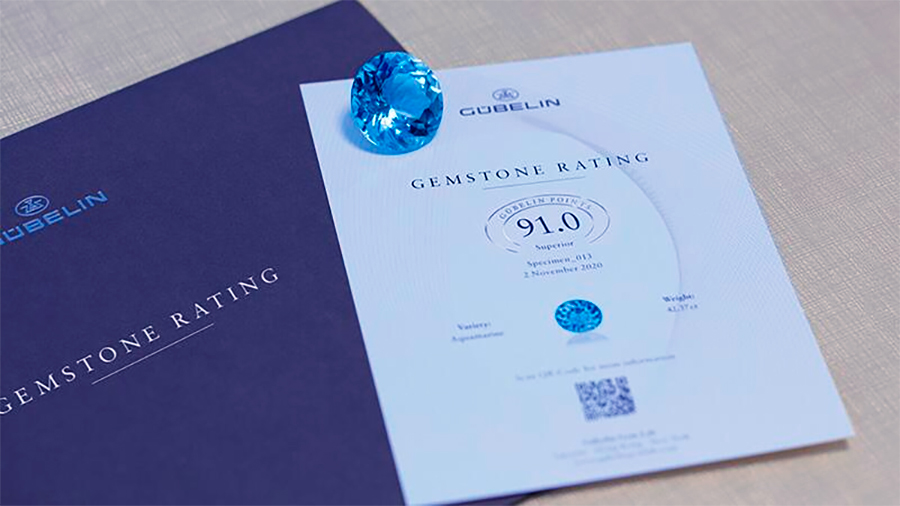Gemstone Certification: Loans For Registration And Storage
Precious stones attract collectors, jewelers, and investors alike, but their value is never fully realized without proper certification and reliable storage. A diamond, sapphire, or emerald without documented proof of origin and quality is difficult to insure or resell. Likewise, a certified stone that is poorly stored risks damage, theft, or devaluation. Both certification and secure storage involve significant costs. For individuals and businesses who own multiple stones or manage large collections, loans are often the most practical way to handle these expenses. Financing enables owners to protect their assets while keeping cash flow available for other priorities. The result is a financial system where credit and gemstones work hand in hand to preserve and enhance value.
Why Certification Is Essential For Gemstones
A gemstone without certification carries uncertainty. Buyers wonder if it is natural or synthetic, question its grade, and hesitate to pay premium prices. Certification resolves these doubts. Reputable laboratories analyze stones to confirm authenticity and assess qualities like cut, clarity, and carat. Reports from institutions such as GIA, HRD, or IGI act as international passports, allowing stones to move across markets with trust. Yet certification is not just about a report—it adds liquidity to an otherwise illiquid asset. A certified stone can be insured, pledged as collateral, or included in estate planning. The downside is cost. Complex tests, specialized equipment, and expert evaluations all come with fees. For rare or large gems, certification expenses rise steeply. This is where loans make sense: financing provides upfront cash to secure certificates while spreading the cost across time, aligning with future sales or investment returns.
Market Confidence And Value
Certification boosts market confidence. Investors know that a certified gemstone can fetch higher bids at auction. Jewelers can market stones more effectively. Owners gain access to international buyers. Loans that cover certification help transform assets from uncertain to trusted, multiplying opportunities for trade and investment.
The Importance Of Secure Storage
After certification, the next challenge is safekeeping. Precious stones, because of their small size and high value, are among the most vulnerable assets. Secure storage protects them from theft, damage, or accidental loss. Options range from bank vaults to specialized gem depositories with advanced climate control and insurance coverage. Businesses that deal in gems for trade also use bonded warehouses, which streamline customs processes and hold stones under strict supervision until they are sold. Each option comes with ongoing fees, and for large collections, these costs accumulate quickly. Loans can cover these storage expenses, ensuring that stones remain secure without draining immediate liquidity. Financing also makes it easier for dealers to manage multiple collections across international locations, allowing them to focus on trade rather than worrying about the cost of vaulting.
| Storage Type | Security Level | Best Suited For |
|---|---|---|
| Bank Vault | High, with standard insurance | Individual collectors, smaller collections |
| Specialized Gem Vault | Very high, climate-controlled, insured | Dealers and investors with rare stones |
| Bonded Warehouse | Trade-focused, customs integration | Businesses preparing for auctions or exports |
How Loans Support Certification And Storage
Loans for gemstones are structured around the value of the stones themselves. Owners use certified or to-be-certified gems as collateral to secure financing. Lenders, often specialist financial institutions, evaluate the stones and extend loans based on a percentage of their assessed worth. The funds are then used to pay certification fees and cover vaulting charges. Repayment is tied to either future sales or ongoing business operations. This structure benefits both sides. Borrowers avoid depleting cash reserves, while lenders gain security in the form of valuable assets. In some cases, banks partner directly with gem labs and vault providers, offering bundled services that simplify the entire process. These arrangements reduce paperwork and ensure that certification, storage, and financing work in a single streamlined cycle.
Short-Term Vs. Long-Term Loans
Certification loans are often short-term, designed to be repaid once the stone is sold. Storage loans, by contrast, may be longer, spread across annual fees. Companies sometimes combine both, taking flexible credit lines to cover ongoing needs while awaiting market opportunities.
Realistic Scenarios Of Borrowing
Imagine an investor inheriting a set of unregistered sapphires. The stones are valuable, but without certificates, they cannot be auctioned internationally. Certification and storage costs run into tens of thousands of dollars. Rather than selling one stone at a discount to cover the expenses, the investor secures a loan. With financing, each stone is graded, registered, and stored securely. At auction, the collection fetches far more than it would have uncertified, easily covering repayment. Another scenario involves a jewelry firm preparing to enter a global market. Certification for dozens of diamonds plus secure vaulting stretches beyond available cash flow. Loans bridge the gap, allowing the firm to meet international trade standards while keeping its operations steady. These cases highlight how financing enables owners to unlock full market value without sacrificing assets prematurely.
| Scenario | Main Challenge | Loan Solution |
|---|---|---|
| Inherited Collection | No certification or secure storage | Loan covers grading and vaulting before resale |
| Jewelry Business Expansion | High upfront certification expenses | Financing spreads costs until sales increase |
| Auction Preparation | Need for recognized certificates and vaults | Loan aligns costs with expected auction proceeds |
Risks And Considerations
Loans provide flexibility, but they are not without risks. If stone prices decline, borrowers may find themselves paying off loans with assets worth less than expected. Lenders often require insurance as part of agreements, which adds costs but reduces exposure to theft or damage. Another challenge is liquidity: if a borrower delays selling stones, they still need to service debt. This makes careful planning essential. Borrowers must calculate timelines for certification, vaulting, and eventual sale before committing to financing. Still, with well-structured agreements, the benefits of preserving stone value far outweigh the risks of short-term debt.
Interest And Fee Structures
Interest rates on gemstone loans vary depending on lender type, collateral quality, and market conditions. Some financial institutions charge premium rates, while specialized lenders with experience in gem markets often provide more flexible terms.

The Wider Impact On The Gemstone Trade
Loans for certification and storage have transformed how gemstones are treated in global finance. Instead of being static valuables locked in safes, stones now function as active assets. Lenders see them as collateral with measurable worth, while owners gain liquidity without selling. This shift strengthens the gemstone market overall, encouraging transparency and professionalism. As more stones are certified, buyers trust the market, prices stabilize, and international trade expands. Secure storage further ensures that gems retain condition, making them reliable investment vehicles. In this way, financing not only helps individual owners but also supports the health and credibility of the entire gemstone industry.
Changing Perceptions
Where once gemstones were seen primarily as luxury items, loans tied to certification and vaulting have pushed them into the realm of finance. Today, they stand alongside real estate or art as assets that can be financed, insured, and traded globally.
The Conclusion
Certification and storage are the twin pillars of protecting and realizing the value of gemstones. Both come with costs that can burden individuals and businesses, especially when managing large collections. Loans designed for these purposes provide the flexibility to manage expenses without weakening liquidity. By financing certification, owners secure trust and international recognition for their stones. By financing storage, they guarantee safety and insurance, protecting against loss. Together, these tools help turn precious gems into stable, tradable assets. For collectors, dealers, and investors, financing is no longer an option on the sidelines—it has become a practical necessity for participating in the modern gemstone market.

